The first 'Burst: up-close with a piece of Gibson's history
A buried treasure of the guitar world - unearthed
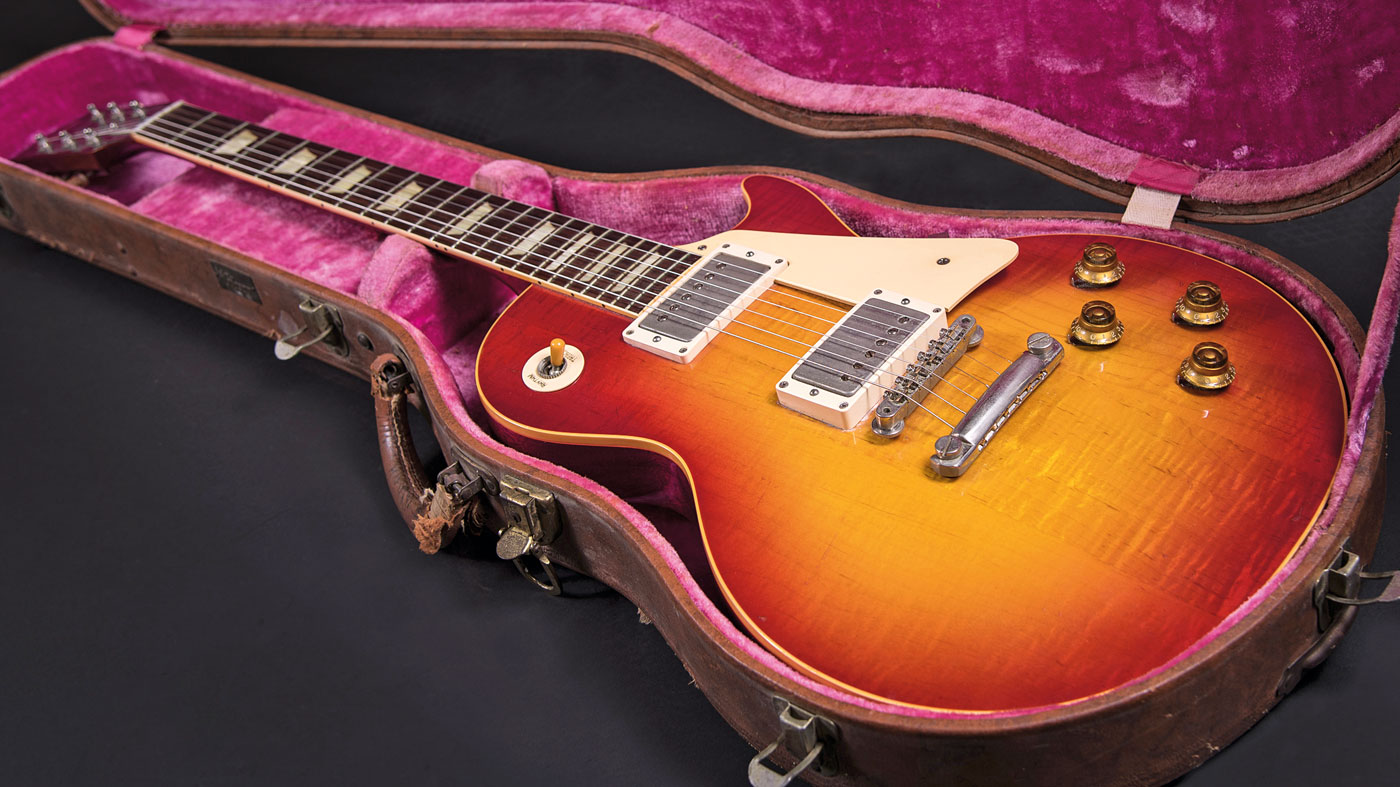
Introduction
Hen’s teeth are laughably common by comparison to a very special guitar that turned up in Nashville recently - a 1958 Les Paul Standard in prototype form that is the earliest surviving example of Gibson’s legendary ’Burst, as we know it today. We talk to Walter Carter of Carter Vintage Guitars about how this extraordinary guitar lay undiscovered for over 50 years.
By 1958, cherry stain finishes were being trialled as a possible replacement to the bullion gold hue of earlier incarnations
History doesn’t always provide clear-cut beginnings and endings, especially when it comes to vintage Gibsons, yet dedicated historians of the Les Paul have long pored over books and other historical sources to try and identify the first examples of landmark models.
Often more akin to a process of evolution, design updates to the famous single-cut often sputtered into being after one-off experimental guitars were built, trialled, rejected and reconfigured until finally a winning formula emerged.
Thus the 1952 Goldtop with the unwieldy trapeze tailpiece gave way first to stop-bar and then Tune-o-matic equipped versions, just as P-90s had given way to PAF humbuckers in 1957. By 1958, cherry stain finishes were being trialled as a possible replacement to the bullion gold hue of the Les Paul’s earlier incarnations.
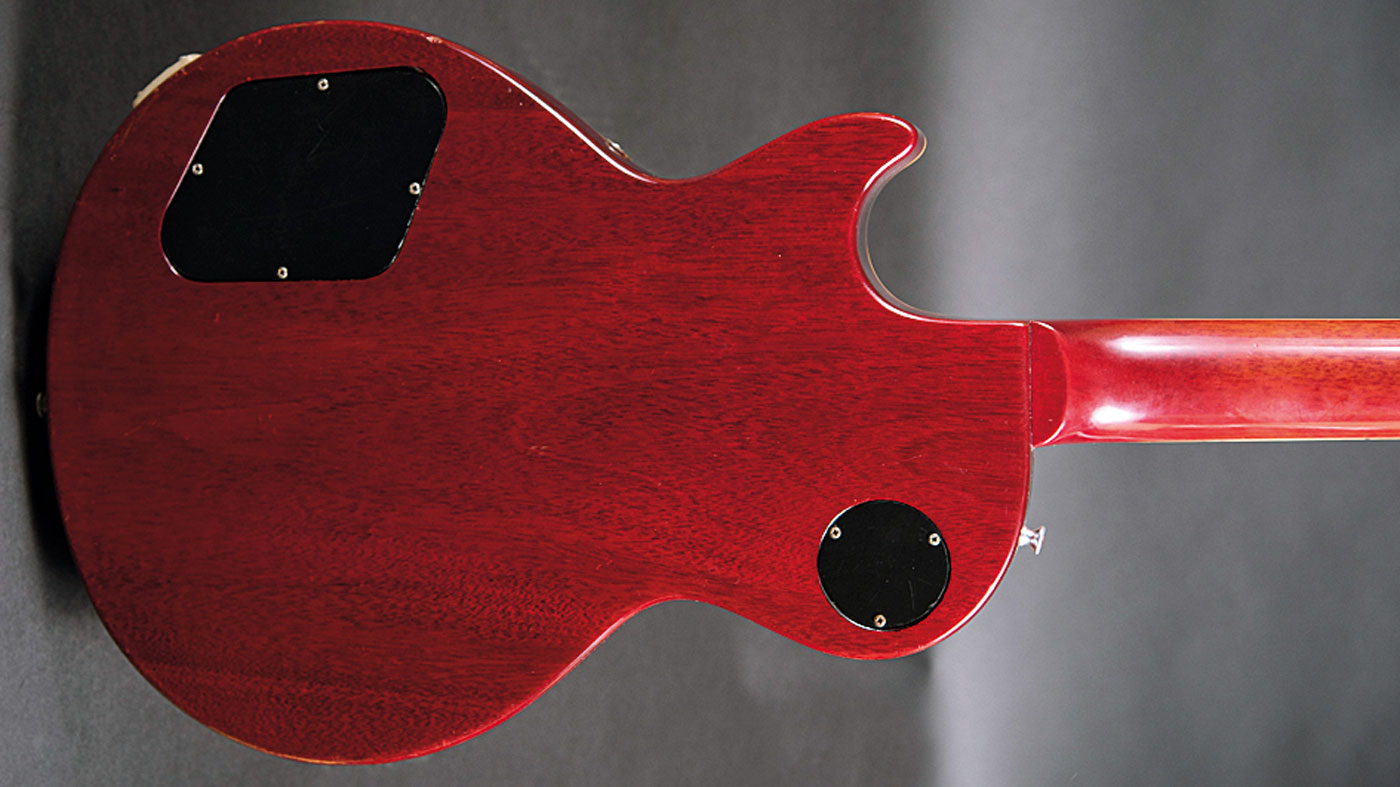
Quite the gift
Just occasionally a guitar comes to light that captures these moments of transition and can be identified as the first of its kind - such as the 1958 Les Paul Standard that arrived out of the blue at the door of Carter Vintage Guitars in Nashville.
As Walter investigated the guitar more fully, he realised he was likely looking at the earliest ‘true’ ’Burst that has yet come to light
Its owner, who remains anonymous at the time of writing, was given it as a Christmas gift in 1958, and had been its sole user in over half a century. He contacted the store to see what it might be worth.
As proprietor Walter Carter explains, the owner already knew it was valuable merely by dint of it being a Cherry Sunburst Les Paul from the classic period. But what about the unusual three-piece maple top that was more typical of the way the earlier Goldtop models were built? And the very low serial number? How did those fit in?
As Walter investigated the guitar more fully, he realised he was likely looking at the earliest ‘true’ ’Burst that has yet come to light - and what’s more, the full story of its life, from purchase to the present day was known.
As this extraordinary guitar goes on sale as a ‘used’ instrument for the first time, we explore its story in greater depth with Walter Carter and find out how a maverick product demonstrator from Gibson caught the imagination of a 14-year-old boy who then took delivery of a very nice Christmas present, indeed…
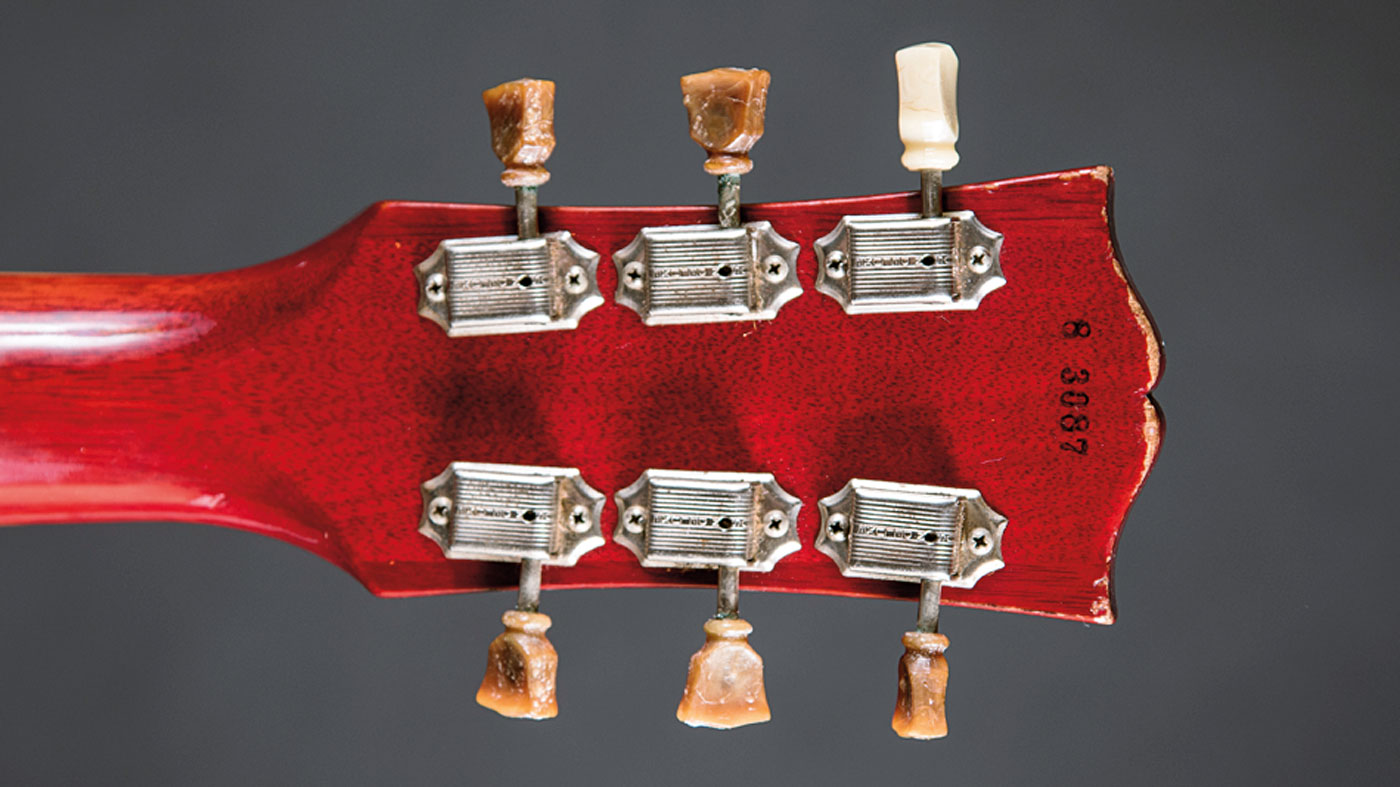
Buried treasure
How did the guitar come to light?
“Well, I knew this serial number from when I was Gibson’s historian. I’d done some research, looking for another cherry top guitar from early ’58. And there was an entry in the ledgers on 28 May 1958. It had these two serial numbers and at the time I didn’t know of either of these guitars.
Out of the blue, a guy emailed and said, 'Maybe you can tell me more about this guitar'
“Not too long after that, the [English version of ] The Beauty Of The ’Burst book was published [Yasuhiko Iwanade, Hal Leonard] and the first guitar in that book was number 8 3096, which was Slash’s guitar. And then the other number in that entry was 8 3087. And that was 20 years ago. But until now, this other guitar, 8 3087, hadn’t turned up.
“Then, out of the blue, a guy emailed and said, ‘Maybe you can tell me more about this guitar,’ and he sent pictures and the serial number rang a bell. I immediately called up what I knew about it previously, and within a couple of weeks we had it here in the shop and were able to go through it.”
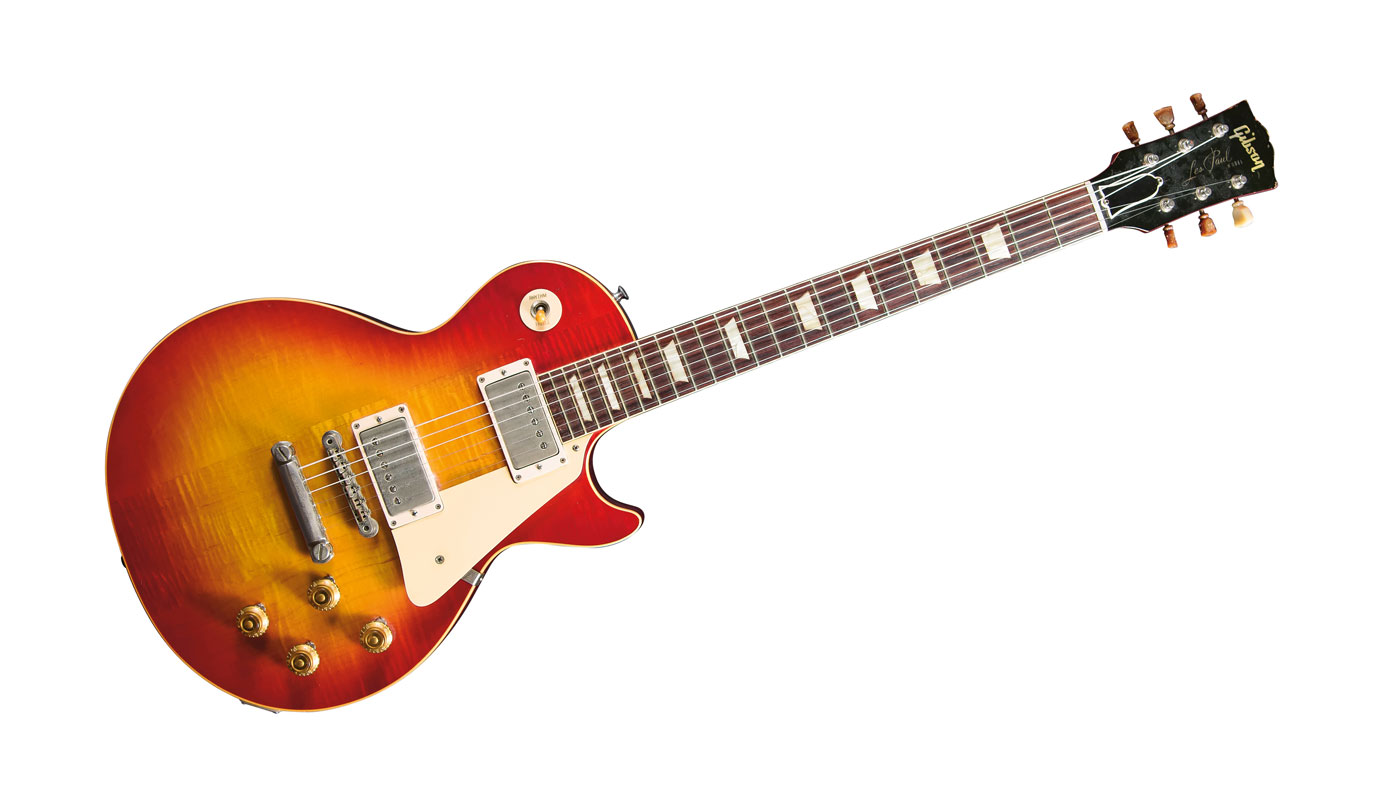
Three-piece suit
What features mark this particular guitar out as the first of its kind that differ from what the ’Burst became?
“It’s an unusual guitar with a three-piece top and the owner had made a couple of changes to it. The jackplate and the switch washer and one tuner - but other than that, it’s original. It is odd in that this guitar has that three-piece top. But it is the guitar that was shipped out with the one that Slash owns now.
It is the guitar that was shipped out with the one that Slash owns now
“I think Gibson was still experimenting. They’d decided to change the finish in 1958 [from Goldtop to Sunburst]. I don’t know that Gibson’s decisions always take place at the first of the year, but typically that’s the time I’d start thinking about a new model to debut, say at a NAMM show, or at a trade show that’s gonna be in the spring. So, looking through the record books, there are several previous references and some of them say ‘cherry finish’ and there’s one that actually says Cherry Sunburst.
“I’m familiar with three of those and one of them does have a uniform cherry top. That guitar has surfaced and is known now. There’s one that I don’t believe is known, but I’ve actually seen it. And it has a top and back that is actually like the red mahogany finishes - what they call a shaded red mahogany - on Gibson f-style mandolins of the ’teens. It looks just like the finish on a 1918 mandolin.
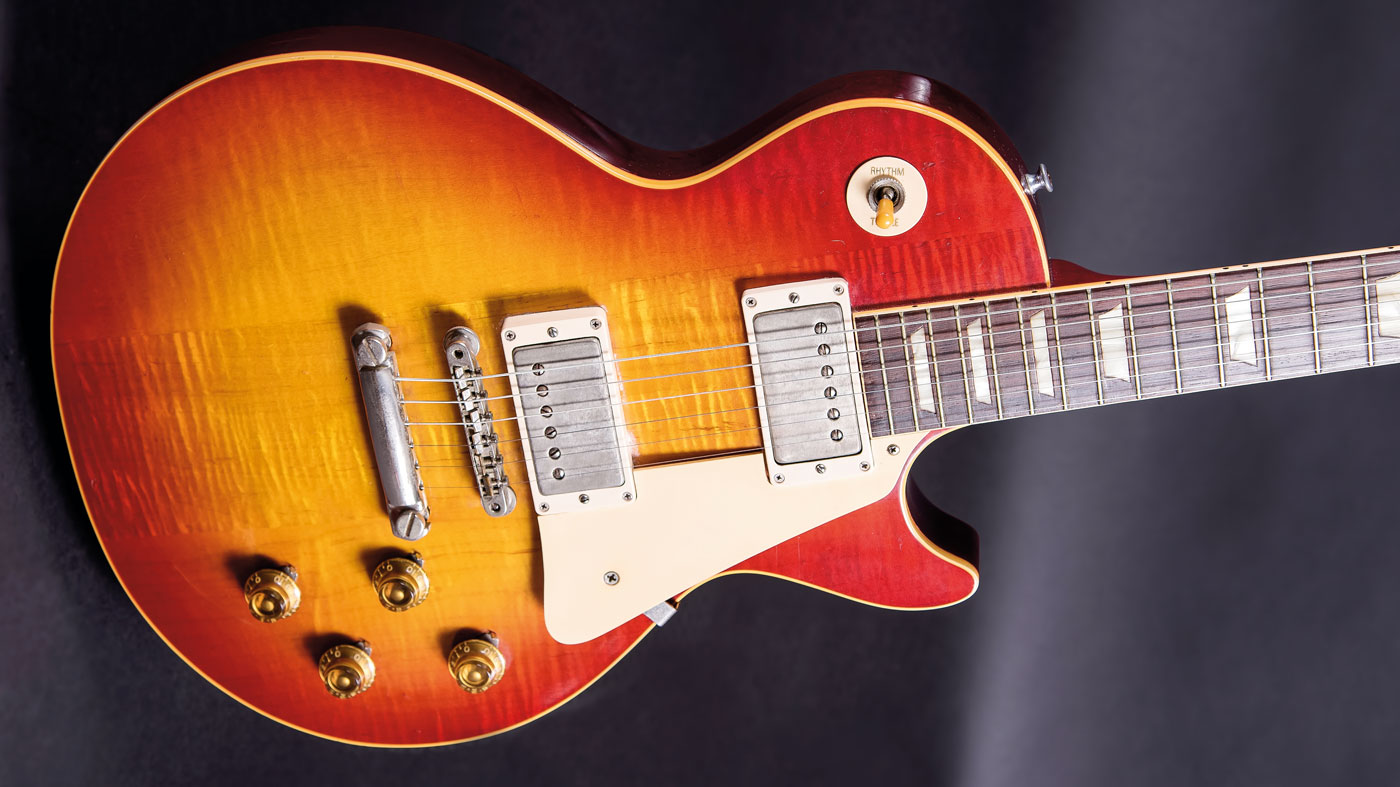
A fine centre-piece
“It was kind of a cherry shade all over, sort of light cherry in the middle and cherry on the outside, and the back was darker. The back was the same way and the back of the neck also. It has the same kind of shading.
[I think] they were still in an experimental stage and they just grabbed a guitar that was intended to be a Goldtop
“And there was yet another… I’ve only seen bad pictures of it. It’s described in the books as Cherry Sunburst, but it looks as if it was sprayed with cherry over the whole thing - like maybe they sprayed cherry over traditional yellow to black sunburst. It’s very dark at the edges and then that’s faded.
“So, you see cherry that appears to have sunken down into the woodgrain at the top. The consensus on that one is that it was over-sprayed entirely with cherry. And, in fact, the serial number looks like it has cherry stain over it. So, those are previous ones.
“The centre piece of this guitar’s top is quite well flamed and I’m sure as I can be with anything related to Gibson that they were still in an experimental stage and they just grabbed a guitar that was intended to be a Goldtop, and had no idea that would be the one they would stick with as far as the new finish goes. I believe the guitar that is now owned by Slash has a slight offset seam. I cannot tell from the pictures I’ve seen, but I believe that it is slightly offset, which many, if not all, of the Goldtops are.”

The next experiment
Where does this one fit in?
“This one that we have now is, in my opinion, just the next experiment. And it’s the one that stuck. These two guitars were sent to CMI - Chicago Musical Instrument Company - which was Gibson’s parent company, presumably for approval, and obviously this is the finish they decided to go with. They shipped it out to a dealer, which was the OK Houck Music Store in Memphis - it was the store where Elvis and Scotty Moore bought their instruments.
The current owner bought it and in April of ’59 and he had a snapshot of himself taken with it
“The current owner was a 14-year-old kid and his father took him in there and he was picking out a guitar that was gonna be a Christmas present. There was a Gibson representative there doing a demonstration on two new Gibson models, and this was one of them and he remembers the demonstrator’s name, which was Andy Nelson.
“He’s getting better known now. He was sort of a fly in the ointment for Gibson’s management back in those days, but he was responsible for the L-5CT George Gobel guitar, and he was also responsible for the Epiphone Excellente and the Gibson Crest. But his main job was as a clinician and product demonstrator.
“He was there playing this guitar and that’s what this kid decided he wanted. He bought it and in April of ’59 and he had a snapshot of himself taken with it; it clearly shows the three-piece top and the woodgrain matches up.
“He’s 70 years old now and he kept the guitar all that time. He really had no idea… I mean, he knew that he had a Sunburst Les Paul, which he thought had some value, but had no idea that it might be the first with this finish.”
And have any modifications been made to it over the years?
“The owner had broken the jackplate a couple of times and so he had fashioned another one out of some thicker plastic. He changed the jack out when he did that to a new jack, and he said he also broke the switch washer trying to make fast pickup switches, and he got his hand or pick caught up in that. So, that’s been replaced.
“One of the tuner shafts got bent as well, but that was in 1963 and the place he took it still had 50s tuners around and so the replacement tuner is correct. The button on it didn’t age like the others, so it sticks out like a sore thumb - but it is, in fact, a period-correct tuner.”

Highs and lows
What’s it like to play?
“It’s an absolutely wonderful guitar. It’s not the baseball bat neck you traditionally associate with a ’58. It’s a little bit thinner. The feel and the sound is just everything you would expect from a classic Sunburst.
I’m not sure we’ll put it on the website, but the price will get out. It’s $625,000
“The phrase that I keep trying to [use] with this is, ‘the ’Burst as we know it today’. It’s certainly not generically the first Gibson with a Sunburst finish of some sort. But if you could distinguish between ‘Sunburst’ and ‘’Burst’ - well, this is what people would characterise as a ’Burst.”
And if we dropped by on a Saturday morning and asked to try it…
“Well, it’s here in the store - we’ve shown it not to every bloke who walks in, but to a lot of people. I’m not sure we’ll put it on the website, but the price will get out. It’s $625,000. Which is basically a median… We polled a lot of other dealers and people who buy and sell these things. Not necessarily formally dealers, but that’s kind of a median opinion of the value, so I don’t think it’s a gauging kind of price.
“Some people thought it should be much higher, but, at first, some people are taken aback by the three-piece top, so those people would price it lower. But it’s the first of its kind. And, let me reiterate - it is a great guitar on its own merits.”
Jamie Dickson is Editor-in-Chief of Guitarist magazine, Britain's best-selling and longest-running monthly for guitar players. He started his career at the Daily Telegraph in London, where his first assignment was interviewing blue-eyed soul legend Robert Palmer, going on to become a full-time author on music, writing for benchmark references such as 1001 Albums You Must Hear Before You Die and Dorling Kindersley's How To Play Guitar Step By Step. He joined Guitarist in 2011 and since then it has been his privilege to interview everyone from B.B. King to St. Vincent for Guitarist's readers, while sharing insights into scores of historic guitars, from Rory Gallagher's '61 Strat to the first Martin D-28 ever made.


